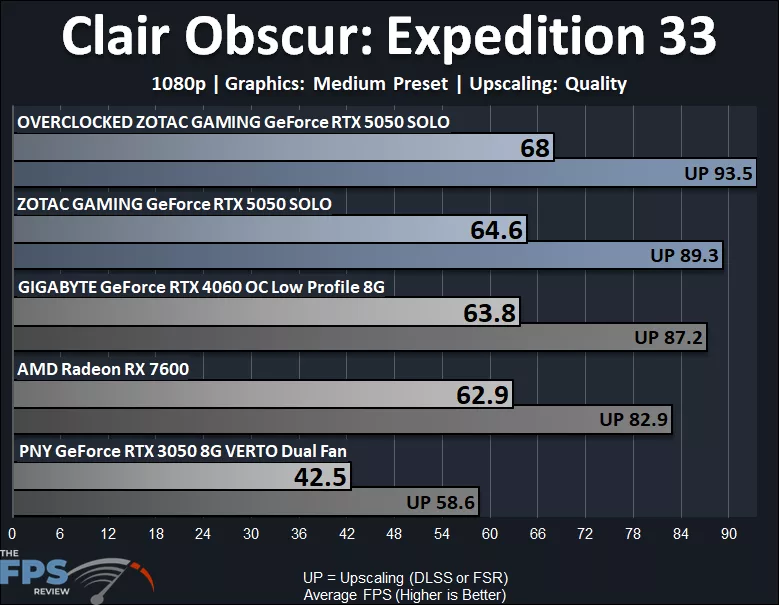Clair Obscur: Expedition 33
Clair Obscur: Expedition 33 was released in April of 2025 and runs on the Unreal Engine 5. This is one of those games where ‘Ray Tracing’ is enabled at all times, native to the game. The game features Lumen for global illumination and reflections, and Nanite for high-detailed geometry. It also features DLSS Upscaling and Intel XeSS, but not FSR. Instead, for ‘FSR’ we will utilize the game’s built-in TSR setting at Medium, which is the closest render resolution to DLSS Quality mode. We will also use the game’s built-in graphics presets for quality settings. We are testing an area near the beginning of the game, in the Prologue, near the end of where the first chapter begins, which offers an opportunity to test a large open area with NPCs and a long stretch of the map freely. We are performing a manual run-through in this area.
Native Resolution

Clair Obscur: Expedition 33 is a very demanding game, and it was very slow to run at the highest “Epic” settings at 1080p on the ZOTAC GAMING GeForce RTX 5050 SOLO. Instead, we had to lower the game all the way down to the “Medium” graphics setting in order to find playable performance at Native Resolution 1080p on the ZOTAC GAMING GeForce RTX 5050 SOLO.
Performance-wise, the ZOTAC GAMING GeForce RTX 5050 SOLO is 52% faster than the GeForce RTX 3050. It also edges out the GeForce RTX 4060 and Radeon RX 7600 in this game, 1.2% above the RTX 4060 and 3% above the Radeon RX 7600. Further, turning on DLSS Upscaling pushes performance up to almost 90FPS average, and very smooth gameplay. Overclocking adds about 5% more performance, the highest yet.
